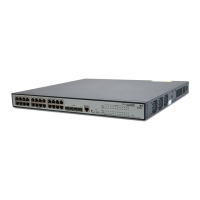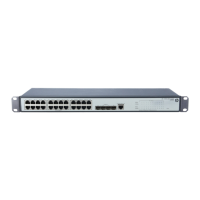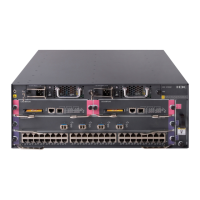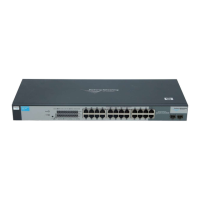MAC/PHY Configuration/Status
Contains the rate and duplex capabilities of the sending port, support
for auto negotiation, enabling status of auto negotiation, and the
current rate and duplex mode.
Power Via MDI Contains Power supply capability of the port.
Link Aggregation
Indicates the support of the port for link aggregation, the aggregation
capability of the port, and the aggregation status (whether the link is in
an aggregation).
Maximum Frame Size Indicates the supported maximum frame size. It is the MTU of the port.
LLDP-MED TLVs
LLDP-MED TLVs provide multiple advanced applications for voice over IP (VoIP), such as basic
configuration, network policy configuration, and address and directory management. LLDP-MED TLVs
provide a cost-effective and easy-to-use solution for deploying voice devices in Ethernet. LLDP-MED TLVs
are shown in Table 93.
Table 93 LLDP-MED TLVs
T
LLDP-MED Capabilities
Allows a MED endpoint to advertise the supported LLDP-MED TLVs and its
device type.
Network Policy
Allows a network device or MED endpoint to advertise LAN type and VLAN ID
of the specific port, and the Layer 2 and Layer 3 priorities for a specific set of
applications.
Extended Power-via-MDI
Allows a network device or MED endpoint to advertise power-related
information (according to IEEE 802.3AF).
Hardware Revision Allows a MED endpoint device to advertise its hardware version.
Firmware Revision Allows a MED endpoint to advertise its firmware version.
Software Revision Allows a MED endpoint to advertise its software version.
Serial Number Allows an LLDP-MED endpoint device to advertise its serial number.
Manufacturer Name Allows a MED endpoint to advertise its vendor name.
Model Name Allows a MED endpoint to advertise its model name.
Asset ID
Allows a MED endpoint to advertise its asset ID. The typical case is that the
user specifies the asset ID for the endpoint to facilitate directory management
and asset tracking.
Location Identification
Allows a network device to advertise the appropriate location identifier
information for an endpoint to use in the context of location-based
applications.
NOTE:
For more information about LLDPDU TLVs, see the IEEE standard (LLDP) 802.1AB-2005 and the LLDP-MED
standard (ANSI/TIA-1057).
